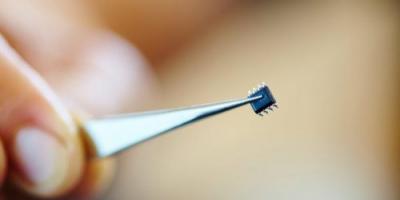An armchair is an integral attribute of the interior, which is found in almost every home. A person uses this furniture almost every day, which leads to a deterioration in its condition. Will help restore technical specifications design such an operation as chair repair.

Features of furniture restoration
Furniture repair is a complex operation that depends on the type of product and the breakdown itself. Today, such operations are rarely carried out independently. It is advisable to entrust the solution of such tasks to experienced specialists, who will complete them much faster and with better quality.
Furniture restoration means restoring not only its functionality, but also its appearance. Feature upholstered furniture is that it uses fabric upholstery. To repair the internal structure, the fabric will need to be removed or replaced. This operation also requires certain skills and effort.




What can you do with your own hands?
A broken chair is not always a problem, as you can try to restore its condition yourself. There are several types of operations that can be easily performed at home:
- Padding. This process involves replacing old fabric with new one. This also includes changing the filling (foam rubber, etc.) and restoring the internal structure of the chair. If necessary, the wooden surface itself can be restored.
- Upholstery. This approach involves upholstering the surface of the chair with fabric to update its appearance. Such operations are often performed on old rigid structures, the surface of which is not so easy to restore with paint.
- Repair. This general concept, which includes the previously discussed operations. But often this word refers to all repair work associated with restoring the condition of the chair frame. This may include strengthening the structure with metal corners, replacing legs or seats, and restoring the surface of the material using paint and sanding.

To carry out all the previously described operations, you should not only have experience, but also stock up on many special tools.

Accessories
Modern chairs are made from various materials. The design of such modifications consists of many elements that can be replaced if necessary. Often these chairs include office models that are equipped with a gas lift mechanism. For restoration similar products You may need several types of components:
- Rollers. This mechanism is made from various types plastic. When choosing this product, it is important to consider its purpose, connector type and fixation method.
- Gas lift. Almost all office chairs are equipped with this element, which allows you to hold the chair at a certain height. There are several types of these structures on the market today. It is important to pay attention to the type of mechanism that was previously used in the damaged chair.
- Cross. Plays the role of a supporting element. They are made in the form of a 5-ray star, to which rollers are attached. When purchasing, it is important to pay attention to the quality of the material and the way the parts are connected.
There are many other components that will be needed when repairing such furniture. This can include everything from small handles and bolts to specialized fabrics.



How to re-string: step-by-step guide
One of the ways to restore an old leather chair is to reupholster it. This process is quite lengthy and labor-intensive. First of all, new fabric is purchased. Upholstery can be done with leather or other popular materials. Some experts also recommend purchasing substances for padding (foam rubber, batting). To simplify the reupholstering operation, you also need to have a stapler, nails, hammer, etc.



The algorithm for solving this problem can be described in several successive steps:
- The first stage involves removing the fabric from the bottom of the chair. IN simple models this part is fixed only from below. But there are complex models, so it is important to initially free this part and then proceed with the remaining operations.
- After this, the fabric is completely removed from the surface of the structure. It is important to do this consistently to prevent any damage to the elements. Please note that each element of the chair is covered with one piece of fabric. Therefore, it must be freed sequentially, layer by layer. You should not tear these elements, as they will then need to be used as blanks for cutting.
- The next step is to dismantle the old foam upholstery. To remove it, you should carefully unbend it and remove all the metal brackets with which it was secured. Also try not to tear the material, which will later be used as blanks when replacing foam rubber.
- Cut out the material. This operation involves the formation of new upholstery elements. To do this, use old pieces of fabric that were attached to the armrests, backrest and seat. The size of the new elements should be slightly larger than the old ones. This is due to the fact that it is not always possible to predict how accurately the fabric will fit. Therefore, it is better to take it with a reserve.
- This step involves fixing the foam. Previously prepared pieces are sequentially placed on a specific part of the chair. If the foam protrudes in certain places, then it should be cut off. This way it is formed appearance each element. Then a padding polyester is placed on top of the foam rubber. After this, both substances are fixed to the frame using a stapler. It is important to attach them so that they follow the contours of individual parts of the structure.
- The process is completed by attaching the fabric. This operation is very similar to the previous one. But it is important to place the pieces correctly on the surface. Before fixing, carefully align the fabric and tension it. Initially, the middle part of the workpiece is nailed with staples. This is necessary in order to avoid distortions. Then each of the corners is sequentially stretched and secured using a stapler.


How to sheathe it yourself?
The process of upholstering a chair is slightly different from reupholstering, although in many ways it is very similar to it. This operation involves covering the chair with fabric. For such purposes, only furniture is used that was not originally equipped with fabric upholstery.

Upholstery technology involves performing several sequential operations:
- Before upholstering a chair at home, you should stock up on some tools and materials. To perform such operations you will need fabric. Products made from bamboo, cotton and others can be used as this substance. natural materials. It is important that the fabric can withstand constant loads and retain its properties long time. You will also need a stapler, scissors, etc.
- On at this stage you need to disassemble the chair into separate parts. This will significantly speed up the sheathing process. At the same time, try to remember in what order the elements were dismantled, so that in the future it is easy to assemble the structure back.
- After this, fabric blanks are made. Cut them according to dimensions individual element armchairs. Try to use substances with a small margin in order to be able to adjust the location of the material on the surface. If you are planning to do easy chair, foam rubber is placed inside it. This substance also takes up a certain volume, which should be taken into account when forming a fabric blank.
- The final stage is sheathing. They start with small parts, such as the armrest. The plating algorithm is quite simple. Initially, the fabric is placed on the surface of the product and stretched a little so that it is level. It is advisable to do this with an assistant, which will significantly speed up the process. When everything is in place, the material is nailed to the frame with inside. It is important to constantly monitor the tension to prevent distortion.
All other elements are sheathed according to the same principle. If necessary, the material can be trimmed.

How to update old furniture: ideas
Old chairs are often very strong and durable. But after long term After use, they lose their attractive appearance. Do not rush to throw away such furniture, as it can be easily restored.


The technology for updating a chair depends, first of all, on its design. This can be done using several approaches:
- Pieces from the 60s can be restored simply by changing the upholstery. This process is relatively simple. The main thing is to choose the right fabric style. Some designers recommend using multiple color shades that will fit into the overall interior.
- Restoration of the external covering. This approach involves changing the paint layer on wooden or metal surfaces. It is used for chairs made of rattan, wood, wicker and other natural products. This also includes restoration of natural or artificial leather (painting, cleaning, etc.).
- Replacement of certain elements. An old chair will look original if you replace the armrest with a product of a different shape. You can do the same with the legs or back. Here everything depends only on your imagination and capabilities.

How to repair it yourself?
Chairs today have different design, on which the algorithm depends repair work. If it's normal wooden product, then fixing it is quite simple. It is necessary to identify the problem, which is often poor-quality fasteners or a violation of the structure of the material. This can be fixed by replacing wooden element(backrest elements, frame base, etc.) with a new one or simply tightening the bolt.
More difficult to repair are shell chairs, which often have fabric outer upholstery. To get to the breakdown, you first need to dismantle the fabric. The process of repairing such chairs is much more complicated, so it is not always possible at home.



Office chairs are mechanisms that consist of several parts. There are many reasons why this design loses its characteristics:
- Rollers falling out. Often this can only be corrected by replacing the crosspiece or these moving elements. It is important to first check the cause of the breakdown (broken hole, missing retaining ring on the roller, etc.).
- Gas lift malfunction. There are also several reasons here, including improper fastening of the piastrum or malfunction of the control lever mechanism. Therefore, you should check these attributes first.
- Breakage of the cross. The functionality of this element can only be restored by replacing it with a new one.
- The back does not spring. The main cause of this problem is the violation of the integrity of the metal parts inside. Sometimes the spring mechanism also fails. Operation can only be restored by replacing parts with new ones.

I have had a chair in my dacha for a long time, since my grandmother’s time. I always really liked it, and then I came up with a plan for its restoration. Moreover, in Lately“vintage” is gaining more and more significance. Then I decided to take it home and update it.
So, for work we need:
– Stain (you can choose the color that suits you);
– Furniture varnish (we used varnish in a can);
– Screwdriver;
– Upholstery material (we used curtain material);
– Foam rubber (to give the seats a softer and thicker covering);
– Construction stapler;
– Wooden shield;
– Wood glue;
– Drill;
– Vibratory sander.

1. First you need to disassemble the chair.

During our disassembly, it became clear that one part of the legs consists of chipboard and over time it dried out and began to crumble. This part could not be restored. We decided to replace it with a wooden furniture panel.
2. Now we need to sand all these parts. This is the longest and most difficult process. Be patient. We removed the varnish from the parts using a special iron attachment on a drill. And then, the train was cleaned with a machine until the natural color of the wood appeared.


3. Then we cut out the parts of the shape we need from the construction board and cover all other parts with stain.


We chose dark color. Now we wait 5-6 hours until the stain dries completely. After this, we cover them with furniture varnish.

We really wanted to preserve the effect natural wood Therefore, we did not achieve a thick and shiny layer of varnish. The drying time of the varnish is approximately 22 hours to a day, it depends on the thickness of the coating.
4. After all the parts have dried, we begin to assemble the legs. To do this, we needed to drill holes in the new parts in order to connect them with the rest of the parts.

Then, using furniture glue, we connect all the parts together and leave for 3 hours for the glue to dry.
5. Let's start covering the seat of the chair itself. We remove the old covering and take out all the nails and staples. We left the old foam rubber because it didn't deteriorate much.

Our goal is to make the chair more voluminous, so we cut out new foam and placed it on top of the old one.

We cut off the corners of the new foam rubber so that the edges are not very straight, but slightly rounded.

Afterwards, we sew the old foam rubber to the new one so that it does not walk or move inside the chair.

6. Now you can cover the seat with material. Our chair does not have a complex geometric shape, so we were able to successfully cover it in one piece, without resorting to sewing. Gently pulling with help construction stapler we sew it to the chair frame.
Perhaps, everyone still has old furniture in their house or country house today - it’s a shame to throw it away, and it looks shabby. modern interior wretched. But this problem is very easy to solve, just use your imagination. This review contains great and easy to implement ideas that will help you become a real furniture wizard.
1. Sofa in the hallway

A small homemade mattress or soft furniture pad and a pair sofa cushions will allow you to turn an old cabinet into a comfortable and functional sofa with space for storing shoes, which will fit perfectly into the interior of the hallway.
2. Refreshed sofa

Upholstering the cushions of an old sofa and painting its elements will allow you to breathe life into an old shabby piece of furniture and turn it into a stylish part of the living room.
3. Table

Transform desk Soviet times will help with white paint, several decorative moldings and new fittings. First of all, the table must be disassembled, its parts must be cleaned of varnish or paint, moldings must be glued to the drawers, after which all elements must be carefully painted. White color and screw the handles.
4. Bright cabinet

A minor remodel and careful painting of an old wooden bedside table will not only refresh its appearance, but also turn it into a spectacular interior detail.
5. Kitchenette

An eye-catching TV stand can be turned into a children's kitchen, which the growing housewife will surely like and will fit perfectly into the interior of the playroom.
6. Buffet

Don’t rush to get rid of a bulky and, at first glance, completely inappropriate buffet. The new color and slate stickers on the doors will turn it into a stylish and modern piece of furniture that will fit perfectly into the interior modern kitchen.
7. Bright chairs

Careful painting and new bright upholstery will transform old shabby chairs that you didn’t even want to look at before beyond recognition.
8. Pencil case for toys

A boring narrow pencil case is an excellent base for creating a bright, spacious rack for children's toys. To transform it, you will need white and bright paint, as well as wide decorative molding.
9. Bookshelf

Amazing transformation of a completely useless vintage radio into a bright one bookshelf, which was realized using a roll of colorful self-adhesive paper.
10. Banquette

An old cabinet, painted in a light shade that refreshes its appearance, complemented by a soft quilted seat, will become a stylish and functional detail in a modern hallway.
11. Sideboard in a new way

White paint and replacement of wooden sashes with bright curtains allowed us to breathe life into old sideboard, which I previously wanted to throw in the trash.
12. Elegant sofa

White paint and new upholstery allowed to breathe new life into an interesting but outdated sofa.
13. Shelving

Old wooden doors Can be used to create creative shelves for books and decorative items.
14. Fireplace

Fantastic transformation of a Soviet locker into decorative fireplace, which will become a unique detail in a city apartment or the living room of a country house.
15. Decoupage cabinet

White paint and simple pictures using the decoupage technique will help to transform an old, nondescript cabinet. The updated cabinet will fit perfectly into the interior of a modern kitchen and will become its unique detail.
Video bonus:
16. Table

Painting the legs and a new glass top turned the stand into an antique sewing machine in a very original table.
17. Patchwork style chairs

New upholstery in the now popular patchwork style and painting of some elements made it possible not only to update the old chairs, but also to turn them into ultra-fashionable interior items.
18. Decorated chest of drawers

A little effort, imagination and bright colors will allow you to turn your grandmother's vintage chest of drawers into a bright piece of furniture, which will become a spectacular interior detail and something to wow all your guests.
Video bonus:
Good day, shareholders!
So I finally decided to post something for everyone to see :)
In general, my repairs take a long time and are painful, everything is done sooooo slowly, so I’m still far from boasting about the repairs. So I’ll start bragging with the restoration of an old Soviet chair.)
It came to me right after the New Year. At that moment, my repairs had completely stalled, there was absolutely nothing to do, and my hands, from the sudden excess of free time, were itching to do something. This wreck was advertised for pickup and thank you, so... why not?
In general, it was trash and a waste. Honestly, in the photo in the ad it looked much better, but in fact it turned out to be a pile of rotten foam rubber, rusty nails, an incomprehensible thing that had decomposed into dust and a more or less tolerable frame with through holes in the armrests (no one before me bothered with repairs) . Some of the details were lost somewhere a long time ago, which, on the whole, was not surprising - the poor fellow is almost 50 years old.
The first step, of course, is gutting.

I naively thought that nothing could be worse than digging in rotten foam rubber :) But no. The most tedious part is the restoration of the frame. Wash, sand, putty, sand, wash, putty, sand, wash... and so on ad infinitum. Until I got tired of it. And finally - paint it :) Acrylic paint in a can, espresso satin color.

It turned out to be easier with a soft spot. A lot of staples for a construction stapler and a little patience - and you're done.
I left the upholstery scheme the same as it was in the original: slings for the frame, tarpaulin for the slings, foam rubber for the tarpaulin, padding polyurethane for the foam rubber, upholstery for the padding polyester. Foam rubber on the back - 50 mm, on the seat - 100 mm. The backrest was made from a piece of some kind of plywood and by that moment was more dead than alive, so it went to the trash heap, and in its place came a piece of 3 mm PVC plastic. thick.
And a cat. Well, as without her.) Without the cat, nothing happens at all in this house - it’s surprising that she was only in one photo, because she participated in absolutely everything.

In general, this is where everything complicated ends. All that remains is to put everything back together and clean up the mess - straighten the buttons, hem the corners with a hidden seam, paint the fastenings on the legs in the color of the legs. The inserts on the armrests did not reach me complete set, so they were replaced with nuts.

Well, something like this:)

One of the simplest and unexpected ways update an old chair - repainting its upholstery. This option will help if the upholstery is not damaged, but, for example, you need to hide stains or just want to change its color. You can repaint the upholstery using spray paint or paint from a can. Choose universal paint or acrylic for fabric, and before starting painting, you can apply a layer of special primer. You can find paint and primer at hardware, art and craft stores. The bonus of such an alteration is that the upholstery treated with paint acquires not only a new color, but also water-repellent properties, and stains from it can most often simply be removed with a damp cloth.
You will need:
Fabric paint;
A large brush for covering wide surfaces and a small brush, which is more convenient for painting edges;
- container for mixing paint;
Spray bottle with water;
If desired, use masking tape, which can be used to protect the wooden parts of the chair from paint getting on them, and you can do without a primer).
1. First, remove the cushions from the chair. Clean off all dust, wipe the upholstery with a damp cloth, if there is significant greasy spots, it is better to treat them with a stain remover so that they do not prevent the paint from laying flat.

2. If you wish, coat the surface of the chair with primer. You can do without it. In this case, first saturate the upholstery with water by spraying it with a spray bottle. Don't forget the chair cushion(s). While the upholstery is still wet, dilute some paint with water in a 1:1 ratio and saturate the upholstery with this mixture. This step is especially important if the upholstery of your chair is made of thick fabric. Can be protected before painting wooden parts chairs with masking tape.

3. When the first layer is completely dry, you can begin the second. This time cover the chair with undiluted paint. Carefully brush over all corners, painting all the necessary areas of the upholstery.


5. If you wish, you can decorate the finished chair with decor by placing it on glue. Ready!


More ideas for re-upholstered chairs:





2. How to reupholster a chair: master class

This method is, of course, more complicated than repainting. However, by reupholstering, you can almost completely renew an old chair, getting rid of holes and scuffs and getting almost new item for your interior.
You will need:
Fabric for upholstery (choose durable, dense fabric);
Scissors;
Sewing machine and thread;
Furniture stapler and staples for it;
Glue gun;
Braid for decoration;
A screwdriver to remove staples from the upholstery of an old chair.
1. Using a screwdriver, carefully remove the staples securing the upholstery parts to the chair. The removed parts will serve as patterns for new upholstery parts of the same type. You can remove not all of the upholstery or, if you wish, not remove it at all. Then you will have to take measurements from the chair and make patterns for new upholstery parts.

Photo: awesomesauceassashattery.com
2. Cut out new upholstery parts from fabric, not forgetting about allowances of at least 2 cm. Start fitting them to the chair furniture stapler as shown in the photo.




Photo: awesomesauceassashattery.com
3. The piece for the back of the chair may need to be constructed from several pieces to ensure it fits well on the chair. Having sewn it, attach the part with a stapler to the back, folding the edges of the fabric.

Photo: awesomesauceassashattery.com
4. Tape and a glue gun will help hide the attachment points of the back part.


Photo: awesomesauceassashattery.com
5. Finally, sew a new cover for the chair cushion.

Photo: awesomesauceassashattery.com
More ideas for upholstered chairs:


Photo: fourgenerationsoneroof.com


Photo: lovelylittlelife-hannah.blogspot.com

3. How to restore an old “grandmother’s” chair: master class
Several decades ago, such chairs were in almost every Soviet apartment, and in some houses and dachas they have survived to this day. By the way, today such “grandmother’s” chairs, like other items Soviet design, back in fashion. No wonder: the design of this chair is simple and durable, it is comfortable, elegant and laconic. In order for an old piece of furniture to decorate your interior, the chair needs to be restored.
Working technology:
1. Remove the wooden parts of the legs and armrests, clean them of old varnish, if necessary, glue them and cover them with several layers of new varnish.
2. Carefully remove the old upholstery fabric. If necessary, replace the foam rubber by attaching it with a furniture stapler.
3. Using the old upholstery pieces, cut out new ones and attach them to the chair with a furniture stapler.
4. Screw on the parts of the legs and armrests.
Ideas for remodeling a “grandmother’s” chair:









